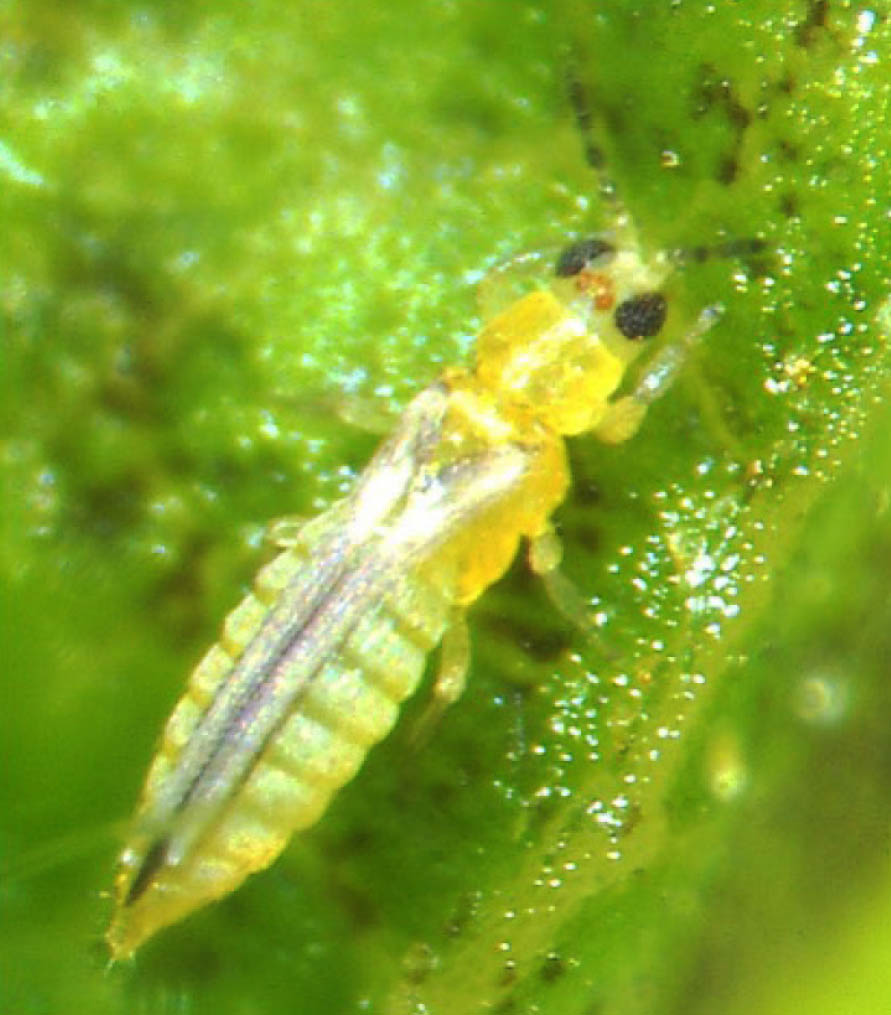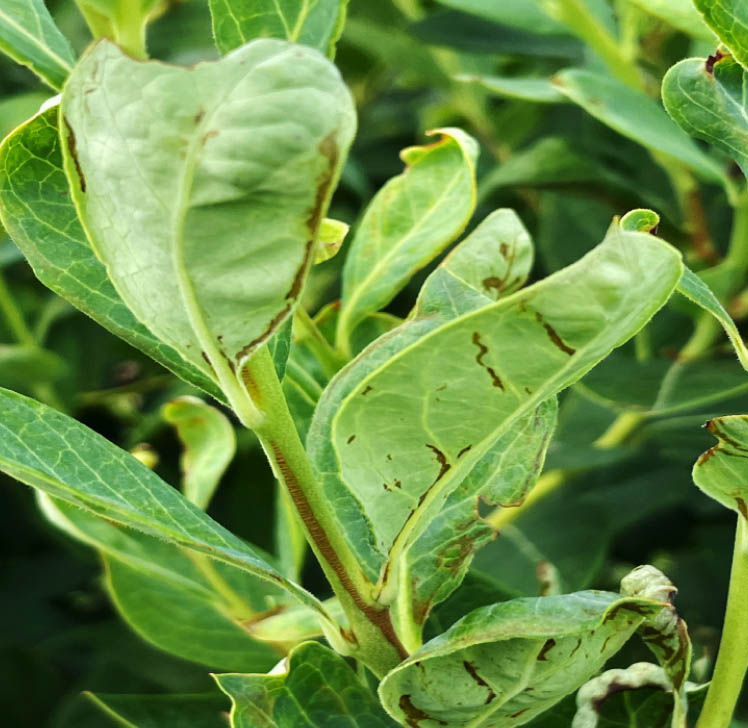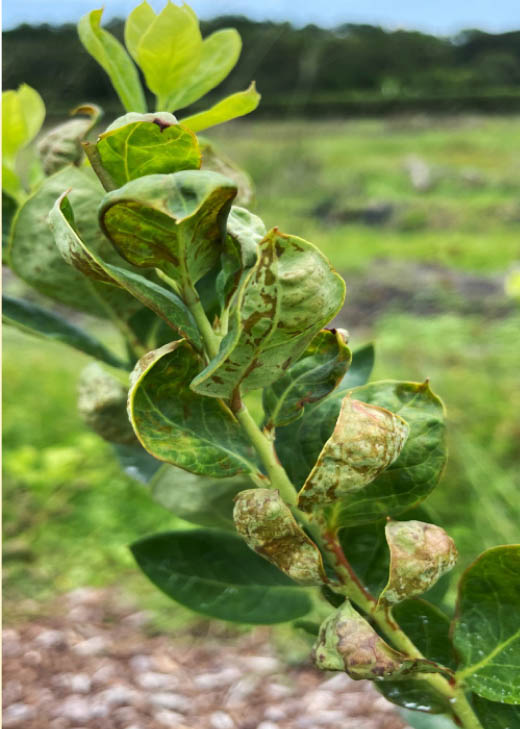By Oscar Liburd and Doug Phillips
Over the past few years, chilli thrips (Scirtothrips dorsalis) have become the most important insect pest of Florida blueberries, causing substantial injury to plant foliage and typically requiring significant and costly chemical control measures.
Chilli thrips have been an economically important pest of vegetable, fruit and ornamental crops throughout Asia, Africa, Oceania the Caribbean and some parts of South America. The first established colony of this invasive pest in the United States was discovered in Palm Beach County, Florida, in 2005, following initial detections in 1991 and 1994. Chilli thrips were first discovered on blueberries in Central Florida in 2008 and have now been found throughout the state.
TINY BUG, BIG BITE
Chilli thrips is a very small thrips species, smaller than flower thrips (Frankliniella bispinosa), found on blueberries in Florida during bloom. Adults are around 1/16-inch long with pale yellow bodies and incomplete dark stripes on the abdomen (Figure 1). Their life cycle is typically completed in 18 to 20 days under ideal conditions. The stages include egg (hatching in five to eight days), larva (eight to 10 days), pupa (two to four days, typically in leaf litter or the soil) and adults, which live between 20 and 25 days.

Photo by Babu Panthi
Adult and larval chilli thrips feed on the plant’s young foliage, typically beginning at the first flush of new foliage following post-harvest pruning. This feeding removes leaf cell contents, resulting in injury to the foliage that is observed as bronzing of the leaf surface and distortion of the leaf. Early symptoms typically include slight bronzing along the edges and veins of the leaf and petiole, along with minor curling and cupping of the leaf (Figure 2).

Photo by Doug Phillips
More advanced symptoms are observed as significant bronzing of the leaf surface along with more pronounced leaf distortion, including leaf cupping and a bubbling pattern over the entire leaf surface (Figure 3) that sometimes results in defoliation. This injury to the foliage may impact photosynthesis and, if present in early fall, could potentially impact floral bud initiation.

Photo by Doug Phillips
MANAGEMENT TIPS
Management strategies for this pest include scouting for the presence of adults, along with chemical, biological and cultural controls. Although chilli thrips are very small, they can be observed with the naked eye or with a hand lens. Scouting is typically conducted by sharply tapping foliage on a piece of paper or a mobile phone screen. If adults are present, they can be observed moving about the paper or phone screen surface. Sticky traps can also be used to capture adults, with white traps considered to be the most effective while still allowing for easy observation of thrips on the trap surface.
Control will be more effective if thrips are found prior to foliage injury. If control measures are not implemented until injury has been observed, the thrips population is likely to increase to a significant size and will be more difficult to control later.
Currently, the most effective controls are chemical insecticides. Following multiple field trials conducted by the University of Florida on Florida blueberry farms, the insecticides that have shown greater levels of effectiveness are Apta (tolfenpyrad), Assail (acetamiprid) and Sivanto (flupyradifurone). Entrust (spinosad) is labeled for organic use. Organic growers should always check with their organic certifier before applying any products. Additional field trials with other products are ongoing.
Research is also currently underway on the use of beneficial predators to control chilli thrips. Predatory mites (Amblyseius swirskii), minute pirate bugs (Orius spp.) and big-eyed bugs (Geocoris spp.) have been observed preying on chilli thrips. These predators have been released and encouraged through companion plantings as a control measure, particularly on organic farms. Beneficial predators can be encouraged and conserved on a farm by planting flowering plants near or among the blueberry rows that will serve as resources for beneficial insects and pollinators.
Cultural control consists of eliminating host plants (including weeds) in or near production fields that support the growth and development of chilli thrips.
MORE RESEARCH NEEDED
There are several areas where more research is needed, including identifying additional chemical controls with increased efficacy, developing an economic threshold for the application of insecticides, further study of the use of beneficial predators, and creating tools to improve the efficiency of thrips monitoring and the timing of insecticide applications. A multi-university grant proposal was recently submitted seeking funding to conduct research in these areas.
Oscar Liburd is a University of Florida Institute of Food and Agricultural Sciences (UF/IFAS) professor of fruit and vegetable entomology, and Doug Phillips is the UF/IFAS blueberry Extension coordinator.










